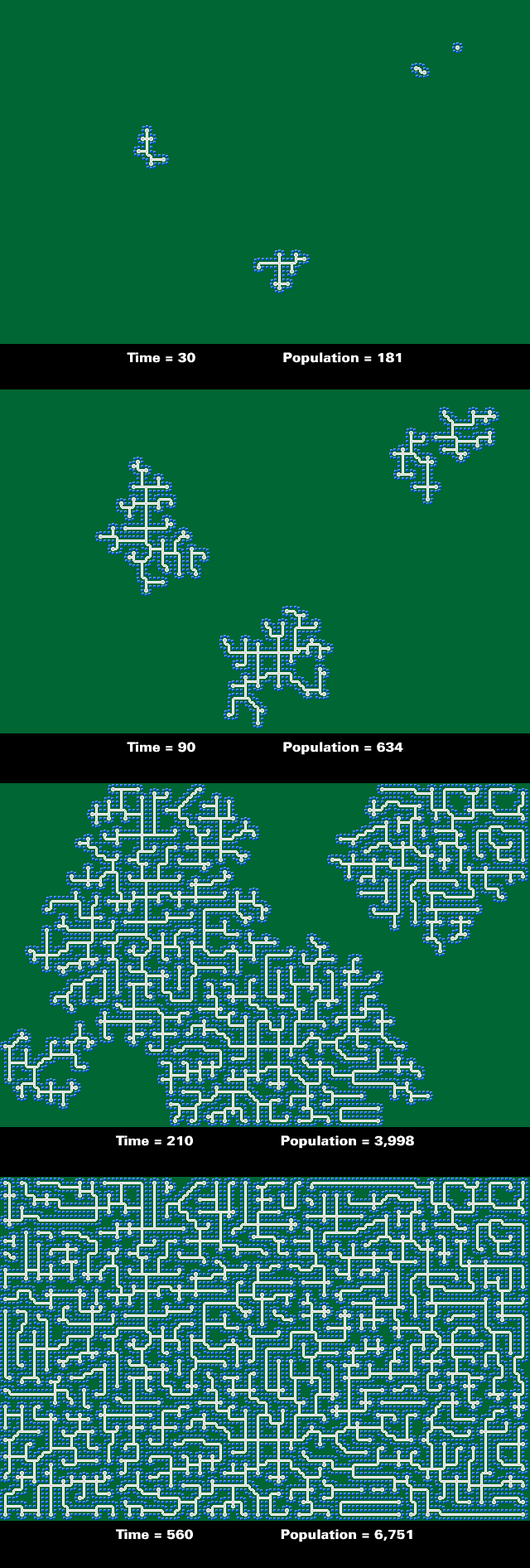|
Roadway Growth Simulation |
|
Four snapshots during a simulation run are shown here. The map is first seeded with a few starter roads, then allowed to grow dynamically, bounded only by the simulated "world" size, here set to 128 × 83 cells. In these images, each cell is 5 × 5 pixels and can take on any of 17 states. The cul-de-sac cell element is a classic space landing pad. The growth algorithm in this simulation employs genetic hillclimbing techniques to optimize for the greatest number of house cells and the lowest number of road cells (with the additional constraint, of course, that any house cell must be adjacent to a road cell, and a few other miscellaneous roadway constraints). |
 |
|
Obvious deficiencies of this particular simulation are (a) that it tends to allow too many zig-zag road configurations, (b) that it does not require 100% connectedness in the roadway system, and (c) that it does not optimize for a general shortest-path connectedness between any two given points. However, the point of this simulation was simply to gain initial insight into the possibilities of automated roadway growth, and its deficiencies could readily be overcome with additional programming or with a different approach. |
|
©1996-97 Todd Lehman. All rights reserved. |